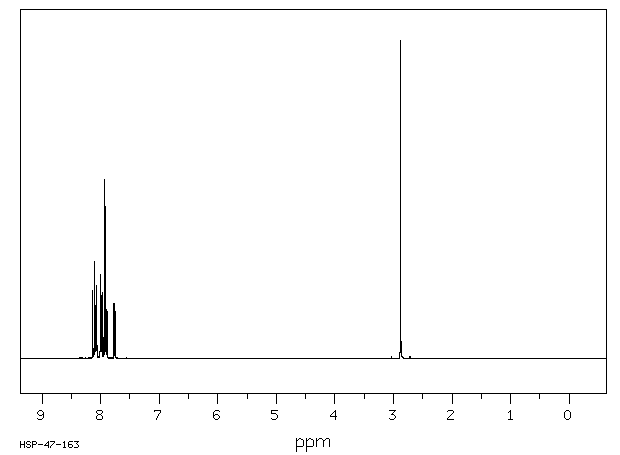代谢
取代的多环芳烃可能通过芳香化羟基化和随后的磺化被代谢为高度反应性的苯基硫酸酯。我们研究了1-甲基芘(MP)和1-乙基芘(EP)的芳香化羟基化,MP是大鼠的肝细胞瘤原,而EP的芳香化羟基化会产生一个次级醇(alpha-HEP),与MP形成的主要醇(alpha-HMP)形成对比。这些碳氢化合物与来自人类和大鼠的肝脏微粒体制剂一起孵化,以及与表达了来自人类(1A1, 1A2, 1B1, 2A6, 2E1, 3A4)和大鼠(1A1, 1A2, 2B1)的细胞色素P450(CYP)形式的V79衍生细胞系一起孵化。所有使用的微粒体系统和CYP表达细胞系都表现出了这两种碳氢化合物的生物转化,而CYP缺乏的V79细胞则没有。在每种情况下都检测到了芳香醇的形成。在人类肝脏微粒体存在下,alpha-HMP及其氧化产物1-芘甲酸(COOH-P)占MP形成的总代谢物的大部分(38-64%),而在表达人类3A4, 2E1或1B1的细胞中,这一比例更高(80-85%)。同样,表达人类1A1的细胞alpha-HMP和COOH-P对总代谢物的贡献(45%)高于表达大鼠同源酶的细胞(3%)。与MP相比,EP以更高的速率和修改的区域选择性被代谢,尽管侧链的omega-羟基化在细胞系中没有检测到,只占微粒体制剂生物转化的一小部分。在表达人类1A1, 1B1和3A4的细胞中,alpha-HEP对EP总代谢物的最高贡献被检测到(38-51%)。在人类肝脏微粒体存在下,alpha-HEP占代谢物的16%。因此,芳香化羟基化是MP和EP代谢的主要初始步骤。这条途径在人类中似乎比在大鼠中更为重要。我们之前已经表明,激活的第二步,即alpha-HMP和alpha-HEP的磺化,也可以被各种形式的人类磺基转移酶有效地催化。
Alkyl-substituted polycyclic aromatic hydrocarbons may be metabolized to highly reactive benzylic sulfuric acid esters via benzylic hydroxylation and subsequent sulfonation. We have studied the benzylic hydroxylation of 1-methylpyrene (MP), a hepatocarcinogen in rodents, and 1-ethylpyrene (EP), whose benzylic hydroxylation would produce a secondary alcohol (alpha-HEP), in contrast to the primary alcohol (alpha-HMP) formed from MP. The hydrocarbons were incubated with hepatic microsomal preparations from humans and rats, as well as with V79-derived cell lines engineered for the expression of individual cytochrome P450 (CYP) forms from human (1A1, 1A2, 1B1, 2A6, 2E1, 3A4) and rat (1A1, 1A2, 2B1). All microsomal systems and CYP-expressing cell lines used, but not CYP-deficient V79 cells, showed biotransformation of both hydrocarbons. Formation of the benzylic alcohol was detected in each case. alpha-HMP and its oxidation product, 1-pyrenylcarboxylic acid (COOH-P), accounted for a major part of the total amount of the metabolites formed from MP in the presence of human liver microsomes (38-64%) and cells expressing human 3A4, 2E1 or 1B1 (80-85%). Likewise, cells expressing human 1A1 showed a higher contribution of alpha-HMP and COOH-P to the total metabolites (45%) than cells expressing the orthologous enzyme of the rat (3%). EP was metabolized at a higher rate and with modified regioselectivity compared with MP, although omega-hydroxylation of the side chain was not detected with the cell lines and only accounted for a small percent of the biotransformation by the microsomal preparations. The highest contributions of alpha-HEP to the total metabolites from EP were detected with the cells expressing human 1A1, 1B1 and 3A4 (38-51%). alpha-HEP accounted for 16% of the metabolites formed in the presence of human hepatic microsomes. Thus, benzylic hydroxylation is a major initial step in the metabolism of MP and EP. This pathway appears to be even more important in humans than in rats. Previously, we had shown that the second step of the activation, the sulfonation of alpha-HMP and alpha-HEP, is also efficiently catalysed by various forms of human sulfotransferases.
来源:Hazardous Substances Data Bank (HSDB)










